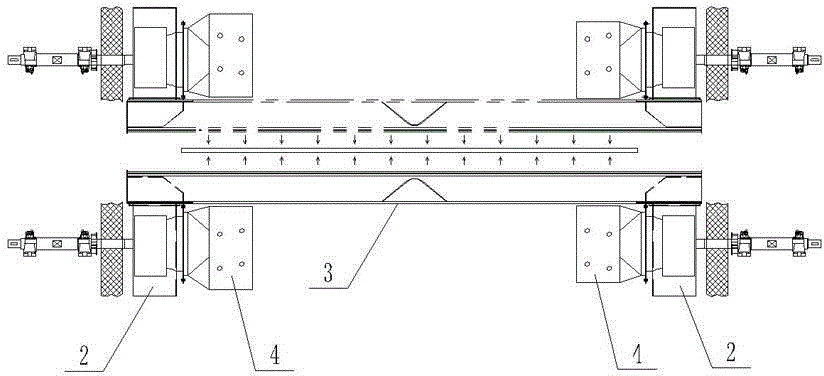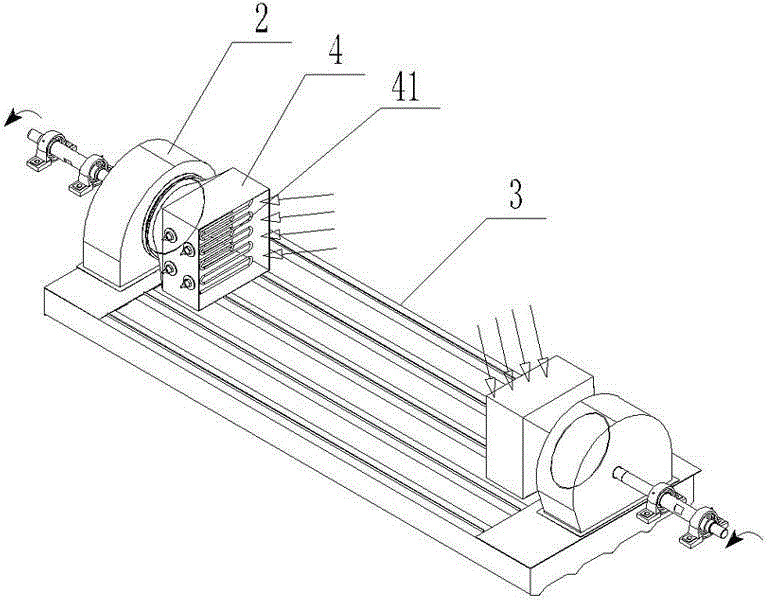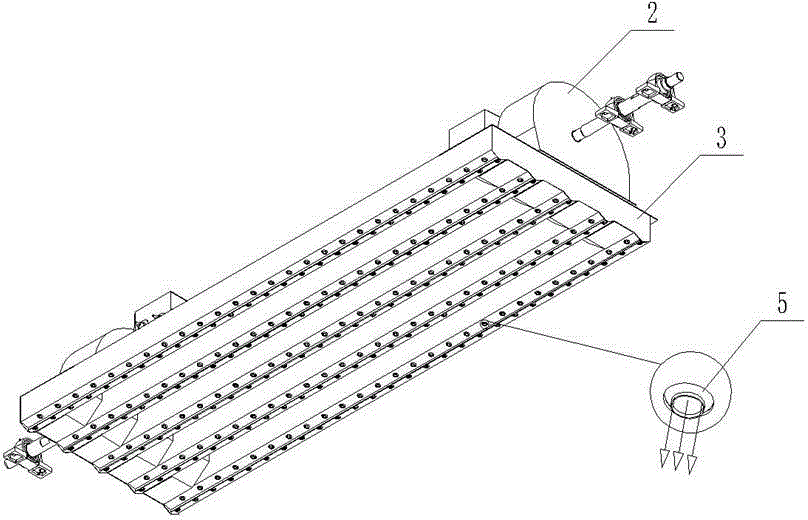Forced convection sandwich glass pre-presser
A technology of forced convection and laminated glass, applied in lamination, lamination devices, layered products, etc., can solve problems such as short price, long replacement time, uneven temperature, etc., to avoid heat loss, reduce processing costs, The effect of uniform hot air flow
- Summary
- Abstract
- Description
- Claims
- Application Information
AI Technical Summary
Problems solved by technology
Method used
Image
Examples
Embodiment Construction
[0022] like Figure 1-5 As shown, the present invention is a forced convection laminated glass pre-pressing machine, including an operating table, a preheating zone A, an initial pressure zone B, convection zones I, II, III, a final pressure zone C, a lower zone D, a pneumatic system, Forced convection system, heat preservation system and lifting device, the upper and lower parts of the furnace body 1 in the convection zone I, II and III are equipped with multiple sets of high-temperature-resistant alloy blade-type convection fans 2 and multiple sets of high-temperature-resistant stainless steel air grilles 3, each set of fans 2 pairs Corresponding to the installation, each group of fans 2 is respectively provided with a heating box 4 at the air inlet, and the air grille 3 is arranged at the lower part of the two heating boxes 4, and the lower part of the air grille 3 is provided with an air outlet 5 aimed at the glass to be processed. A K-type thermocouple temperature sensor ...
PUM
 Login to View More
Login to View More Abstract
Description
Claims
Application Information
 Login to View More
Login to View More - R&D
- Intellectual Property
- Life Sciences
- Materials
- Tech Scout
- Unparalleled Data Quality
- Higher Quality Content
- 60% Fewer Hallucinations
Browse by: Latest US Patents, China's latest patents, Technical Efficacy Thesaurus, Application Domain, Technology Topic, Popular Technical Reports.
© 2025 PatSnap. All rights reserved.Legal|Privacy policy|Modern Slavery Act Transparency Statement|Sitemap|About US| Contact US: help@patsnap.com



